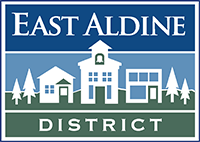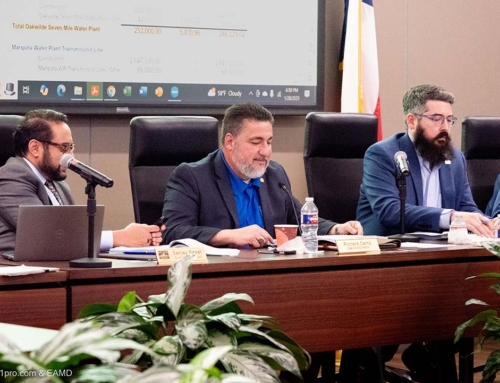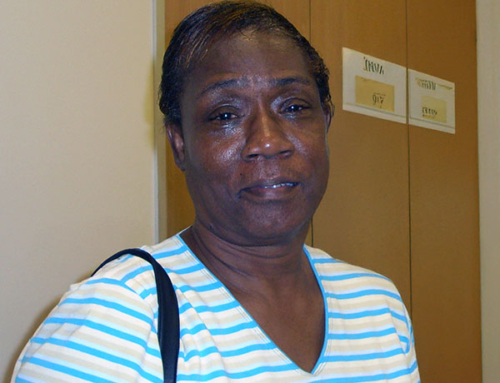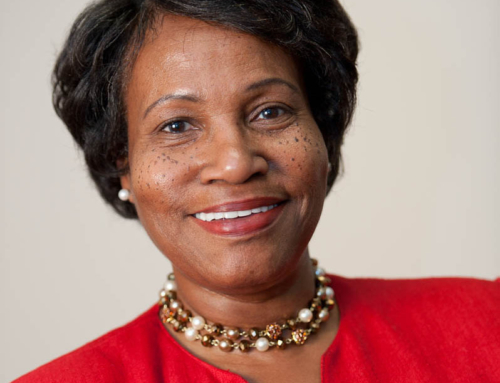 The newly created Harris County Tax Reinvestment Zone #1 is positioned to potentially spend millions of dollars on infrastructure improvements in East Aldine, setting the stage for increased economic development and property values.
The newly created Harris County Tax Reinvestment Zone #1 is positioned to potentially spend millions of dollars on infrastructure improvements in East Aldine, setting the stage for increased economic development and property values.
Harris County Commissioners Court recently approved the birth of TIRZ #1 at the urging of Precinct 2 Commissioner Adrian Garcia.
“We know East Aldine is in a prime spot for phenomenal growth in the next few years,” Garcia said. “I created the TIRZ as a tool to foster that growth, and to do it in a way that most benefits the residents and people already living and working in East Aldine.”
“If any area is a prime candidate for new investment via a TIRZ, it is East Aldine,” the commissioner added. “Aldine has been shortchanged for years, and it is long past time for focused improvements that will come via the new TIRZ.”
The East Aldine Management District worked with Garcia on his idea for the new TIRZ, developing a detailed 50-page report on the proposal. It calls for improvements to mobility (sidewalks, roads and trails, for example), drainage, parks, community facilities and much more.
“This will provide funding for infrastructure and other capital projects,” explained Richard Cantu, executive director of the management district. “In the first couple of years, we’re looking at the potential for significant additional revenue for East Aldine upgrades.”
As indicated by its name, the new TIRZ is the first in Harris County outside the city limits of Houston.
By state law, a tax increment reinvestment zone (TIRZ)
can be used to pay for public improvements to encourage development and/or redevelopment of an area and attract private investment.
According to the report by the management district, “cities and counties may create a TIRZ where conditions exist that substantially impair an area’s sound growth and where development or redevelopment is not likely to occur but for public infrastructure enhancements financed by a TIRZ.”
Where will the money come from?
First, the total appraised value of real property located within its boundaries is established for the year of the TIRZ’s creation. This is the “base value.”
Second, as property values rise, the difference in dollars between the base level and the increased level is the “increment.” Property taxes from the increment are then used to fund further improvements within the zone.
It’s a way for a community to ensure that at least some of its county property tax revenue will be used for improvements in the place the dollars came from — with no additional taxes needing to be paid.
According to the 50-page report, County TIRZ #1 could spend from $126 million to $264 million on projects — boosting the taxable value of property by $1.8 billion — by the year 2052.
The East Aldine Management District board members will also serve as the the County TIRZ 1 board.
Other highlights from the District’s report:
— East Aldine has historically struggled with getting safe and well-connected series of roads, sidewalks, and trails.
TIRZ projects will “enhance connectivity and efficient, safe travel through and throughout the zone by multiple modes of travel including by car, bus, bike and by foot.
— The Aldine area was initially developed without many of the major capital improvements needed to ensure public health and safety, instead depending upon water wells, septic systems, and a ditch system – all of which have largely failed. While improvements have been made, a substantial amount of the area still depends upon rural improvements to serve an increasingly dense area.
Needed improvements include extension of water and sewer service to additional residential, commercial and industrial areas; expansion and enhancement of the stormwater management system from stormwater detention to localized treatment; conversion of open ditches to curb and gutter service; productive use of flood reduction buyout property.
— A lack of investment in new housing in Aldine has resulted in few opportunities for the market to supply quality, affordable housing. The new zone could enticedevelopment of new housing and other improvements that would entice local homeowners to renovate and maintain their properties.
— by Anne Marie Kilday







